Since Frank Lampard became Chelsea manager last summer, many young players were given the chance to perform in front of the crowds. Names like Tammy Abraham, Mason Mount and Reece James are familiar to the fans by now. And, in the FA Cup against Liverpool, there was another youngster that caught our attention. He is Billy Gilmour, a Scottish international who was born in 2001. Days after the impressive performance at Stamford Bridge, he quickly started his first Premier League game against Everton, helping his team to win 4-0.
In this tactical analysis scout report, we will show you the key attributes of Gilmour. This is an analysis that focuses on the traits of the 18-year-old under Lampard’s tactics.
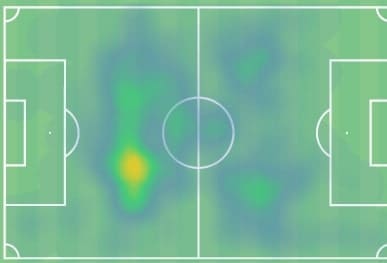
The above image is Gilmour’s heat map at Chelsea’s first team. So far, he had seven appearances for the first team (371 minutes). Under Lampard, he was assigned to two different roles. In the games against Everton and Grimsby Town, the Scottish man was the sole pivot. On the rest of occasions, he played as the attacking midfielder.
Off the ball awareness & quick turns
In the very first image, we will demonstrate one of the best attributes of Gilmour: off the ball awareness. Despite playing without the ball, the Scottish player constantly check his surroundings, and this allows him to make quick decisions corresponding to the movements of the oppositions.
He is always well-prepared to receive the ball. In the following scene, when the ball was travelling to Gilmour’s feet, he checked the situation at his back. The Scottish man noticed Richarlison was lurking behind him, intending to pressure the right centre-back, Antonio Rüdiger. It was impressive as this was his second-check within a second and since things changed quickly on the pitch, checking frequently must’ve helped. Shortly after, Gilmour’s first touch took the ball to the highlighted area, where there were no orange shirts.
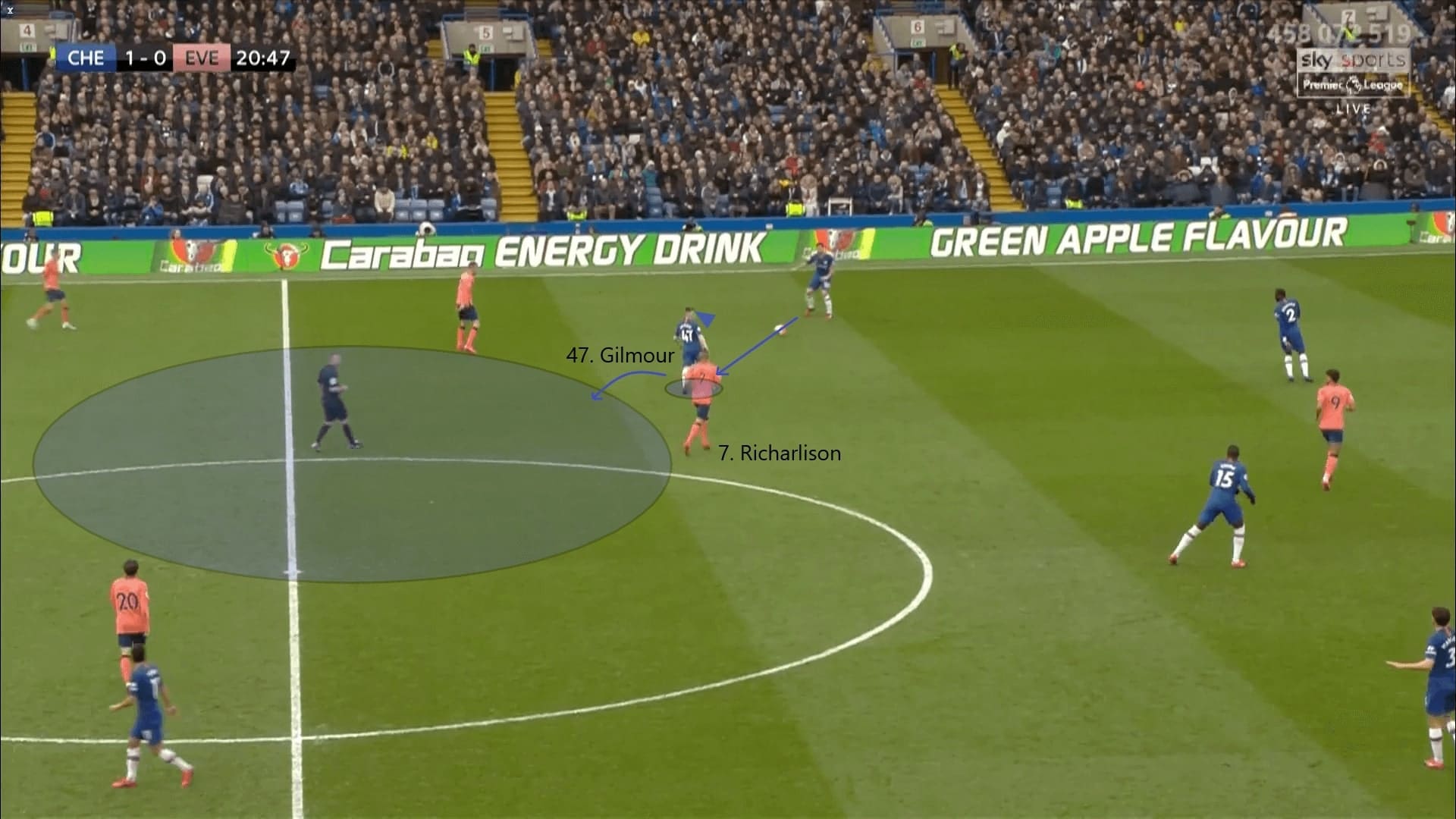
Gilmour also knew how to use his touches to get rid of the opponent. In the Everton example, the turn was a no-touch turn. The context in the below situation is different. Again, Alonso passed Gilmour the ball. Adam Lallana was dashing to the Scottish player in full speed. Again, when the ball was travelling, Gilmour noticed the sprint of Lallana.
In this case, Gilmour did not open his body shape given the limited time. He correctly judged the distance between Lallana and himself, allowing two quick touches on the ball. So, this was his decisions. He used his right foot to control the ball, then, escaped from Lallana and dribbled to the highlighted area with his left foot. He was also demonstrating good composure and calmness under pressure.
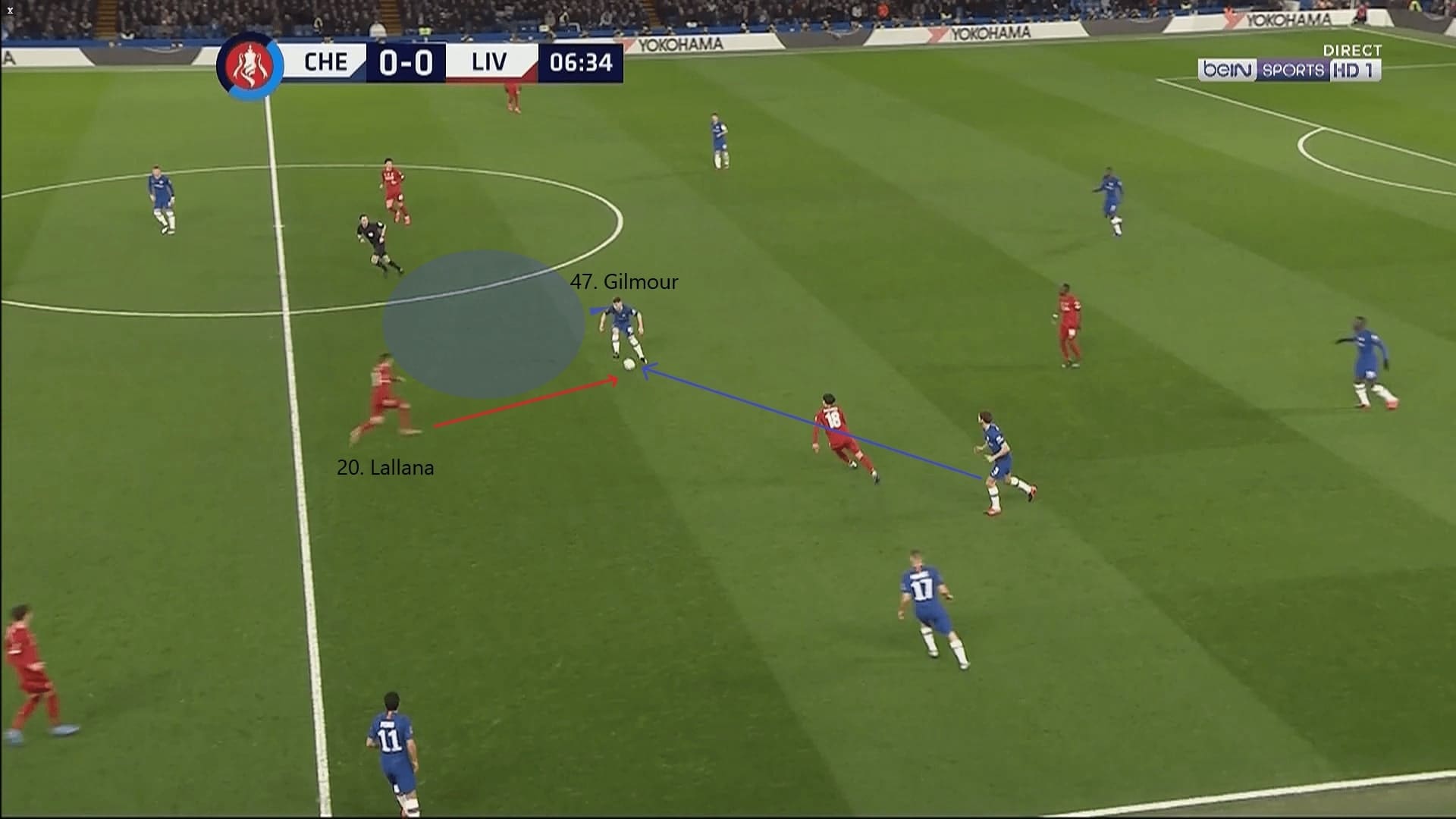
The youngster also has good body balance – you can always see him spinning quickly to get rid of the marker in a game. On this occasion, Marcos Alonso’s pass to Gilmour was suboptimal. It was read by Fred and the Brazilian tried to intercept the ball.
Gilmour did brilliantly in this case. He showed passion to attack the ball, then, quickly separated the ball and Fred with his body in a half-turned shape. The ball protection part was impressive, but the turning was even better because he was not forced to return the pass. Despite a difficult circumstance, Gilmour still protected the ball and won a foul for the team.
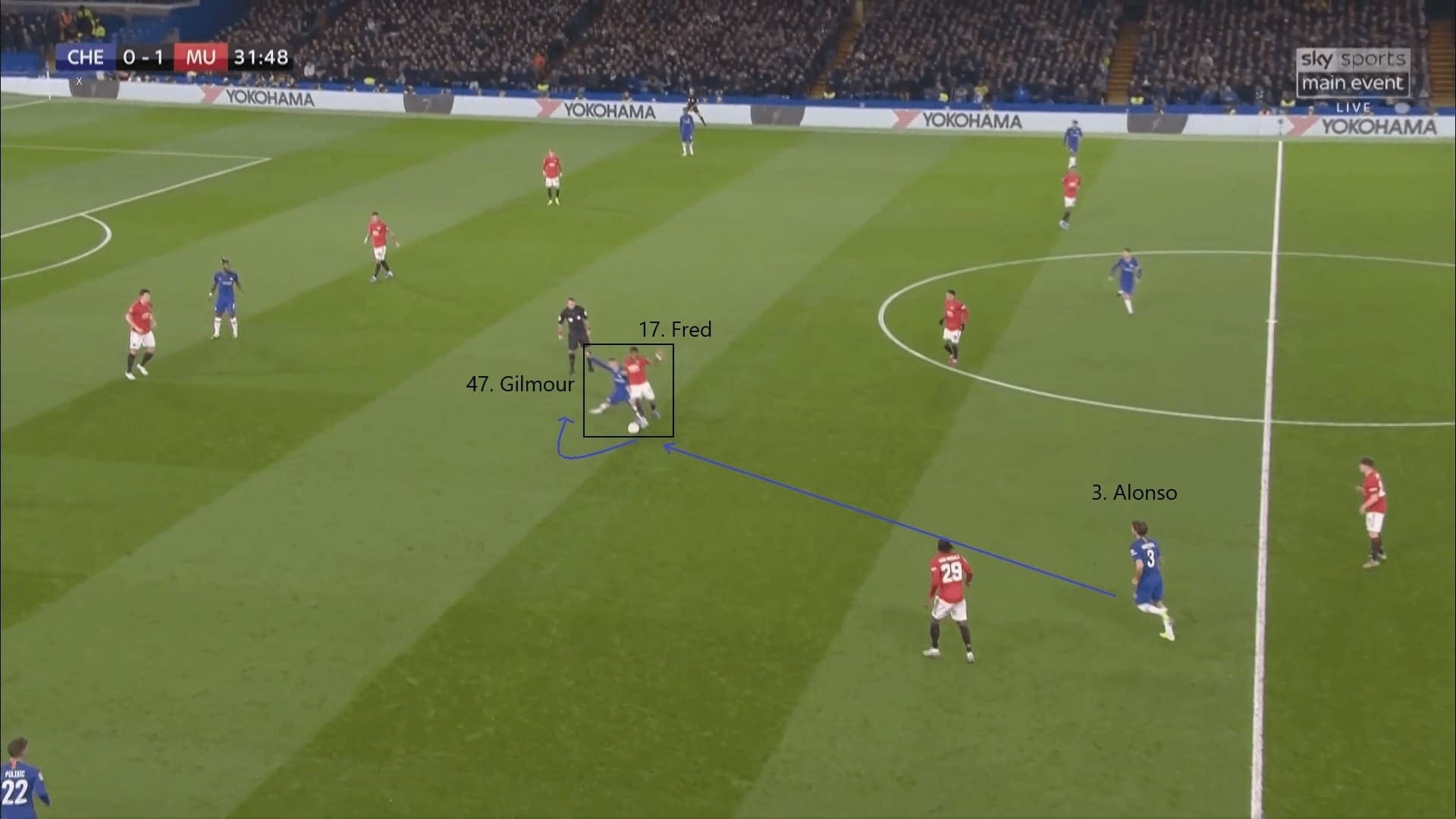
Passing
Playing as a midfielder, of course, we will look at Gilmour’s passes. The Scottish player is cleve and he knows what to do under different circumstances. When the situation was unclear behind his back, he seldom took the risk to turn or take too many touches. On average, he made 64.76 passes/90 minutes, the completion rate was 89.3%. 17.64 of them were forward passes, and Gilmour’s xA was 0.22. Meanwhile, he only had 9.6 back passes. These hinted that Gilmour had an offensive mindset, and, always tried to progress the ball whenever possible.
In this example, Gilmour received the ball under pressure again. Therefore, he quickly passed to Alonso, the farthest player. This pass was much better than finding Mateo Kovačić or Willian, as these two players were being man-marked as well, and it was too risky to find them.
It was right for Gilmour to pass instead of turning. There were two players at his back so turning here was too risky.
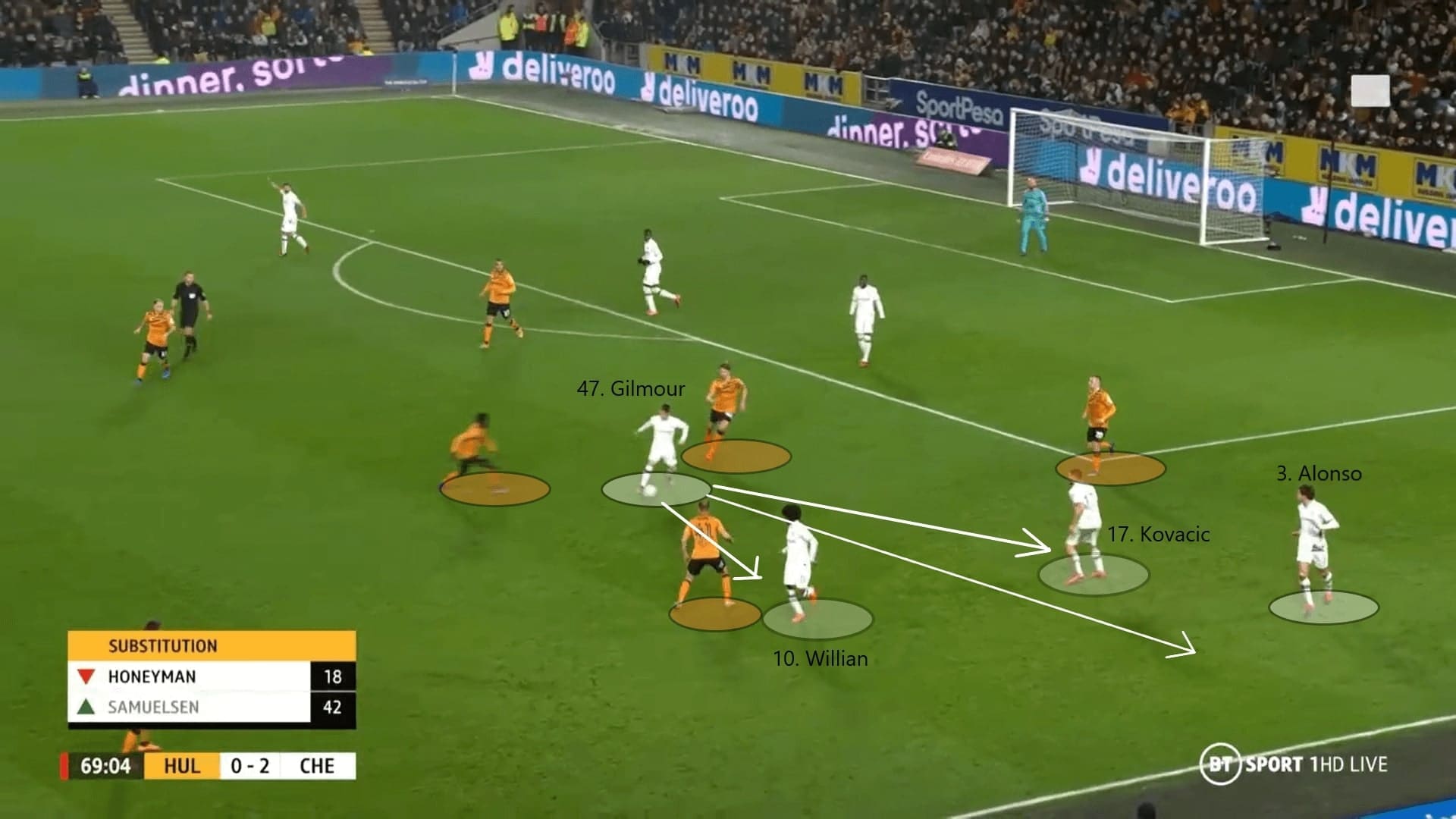
Under different circumstances, Gilmour had the ability to pick the players behind the opposition’s back when he saw them. In this case, Everton players allowed the Scottish man to hold the ball for seconds and Gilmour seldom kept his head down since it was his usual practice to observe the surroundings.
Gilmour noticed the movement of Ross Barkley, as well as the gap between André Gomes and Tom Davies. Although passing to César Azpilicueta was also fine, a progressive pass was always better. Gilmour weighted a comfortable pass to Barkley. The important part was, this pass was travelling to space instead of the feet, so Barkley didn’t need to stop his run to adjust the ball.
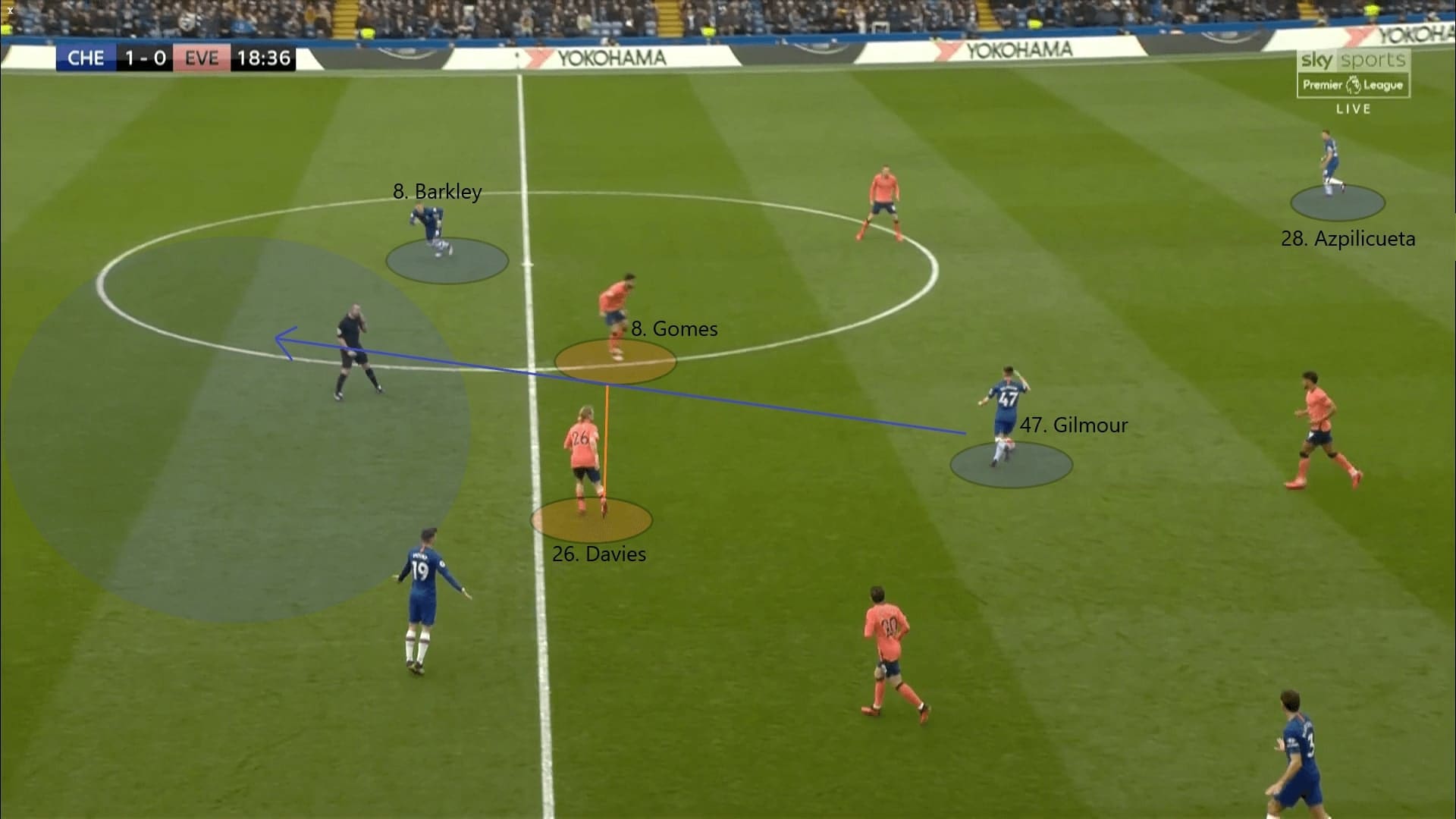
Even in the offensive transitions, when Gilmour had to pass under pressure and in a tighter area, he still managed to pass between the opponents. In this case, Chelsea won the ball and the Red Devils were all around Gilmour.
Despite having to pass in a split second, Gilmour still identified Michy Batshuayi as his target, ignoring the lateral options. This helped Chelsea to start a counter-attack.
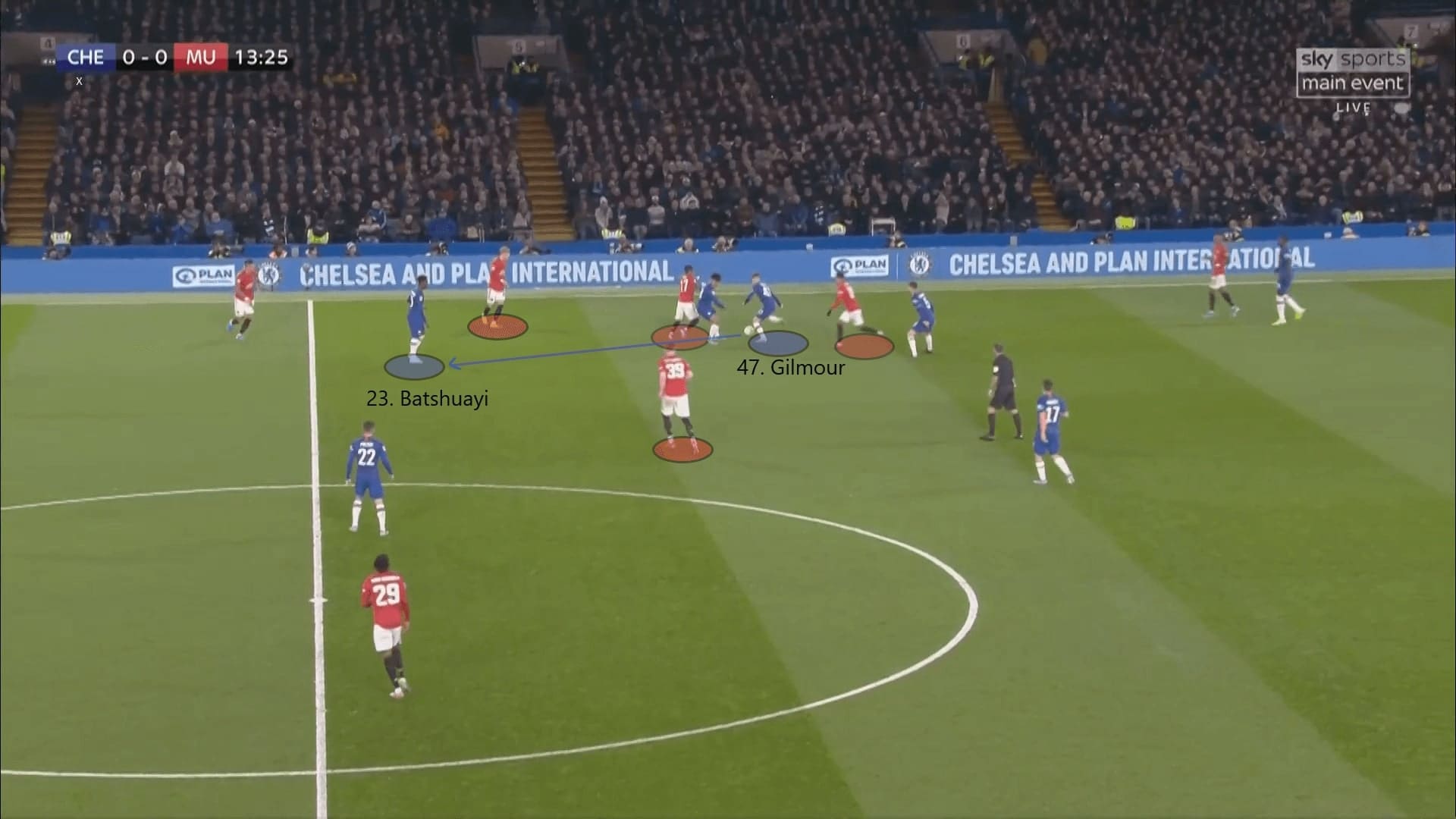
Delayed runs
When playing as the advanced midfielder, Gilmour demonstrated his ability to run into the box. The run was well-timed, and, the delayed runs allowed him to get rid of the marker.
On this occasion, Barkley was carrying the ball forward, Gilmour moved around Mason Holgate and created a temporary 2 v 1 situation against the centre-back. However, Gilmour did not dash into the box in full speed. The key was to wait for Holgate to focus on Barkley and the ball, and, forget about Gilmour. This triggered the sprint of the Scottish man into the box, and he was released by Barkley.
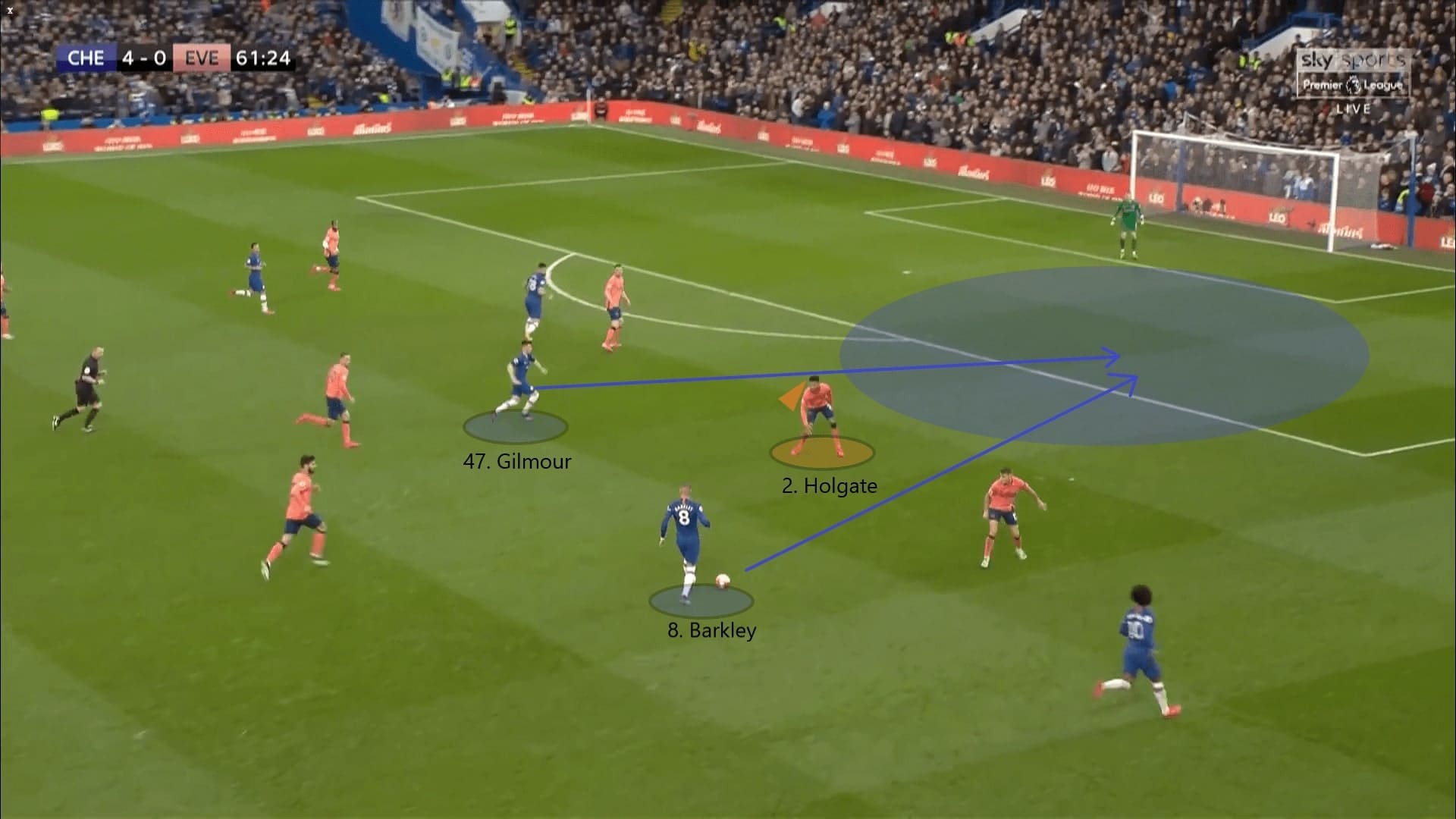
Below is another example. In this case, the Blues were attacking the right flank. Since Luke Shaw was being overloaded, Fred had to spare a second to look at the wide areas. The Brazilian was marking Gilmour initially, and, Gilmour capitalised on this second, staying on Fred’s blindside. He became the free player to attack the box.

Defensive positioning & interceptions
When playing as a sole pivot, passing is a vital attribute of any player. However, the defending is equally important too. Despite exercising good passes, Gilmour also possessed sufficient defensive awareness to deal with different situations.
In the following image, we could see Gilmour was the sole pivot, protecting the central areas. The positioning of the Scottish player allowed Jorginho to step out, as Gilmour covered spaces behind the Italian. This is important, as Jorginho is a player who likes to leave his position, Gilmour’s presence balanced the team, providing another layer of defence.
We should also notice the gesture of Gilmour. He knew Takumi Minamino was behind him. However, instead of leaving his position to approach the Japanese, the Scottish man prioritised protecting the central areas. If Lampard’s order was to defend the zone instead of marking the player, then Gilmour did a great job.
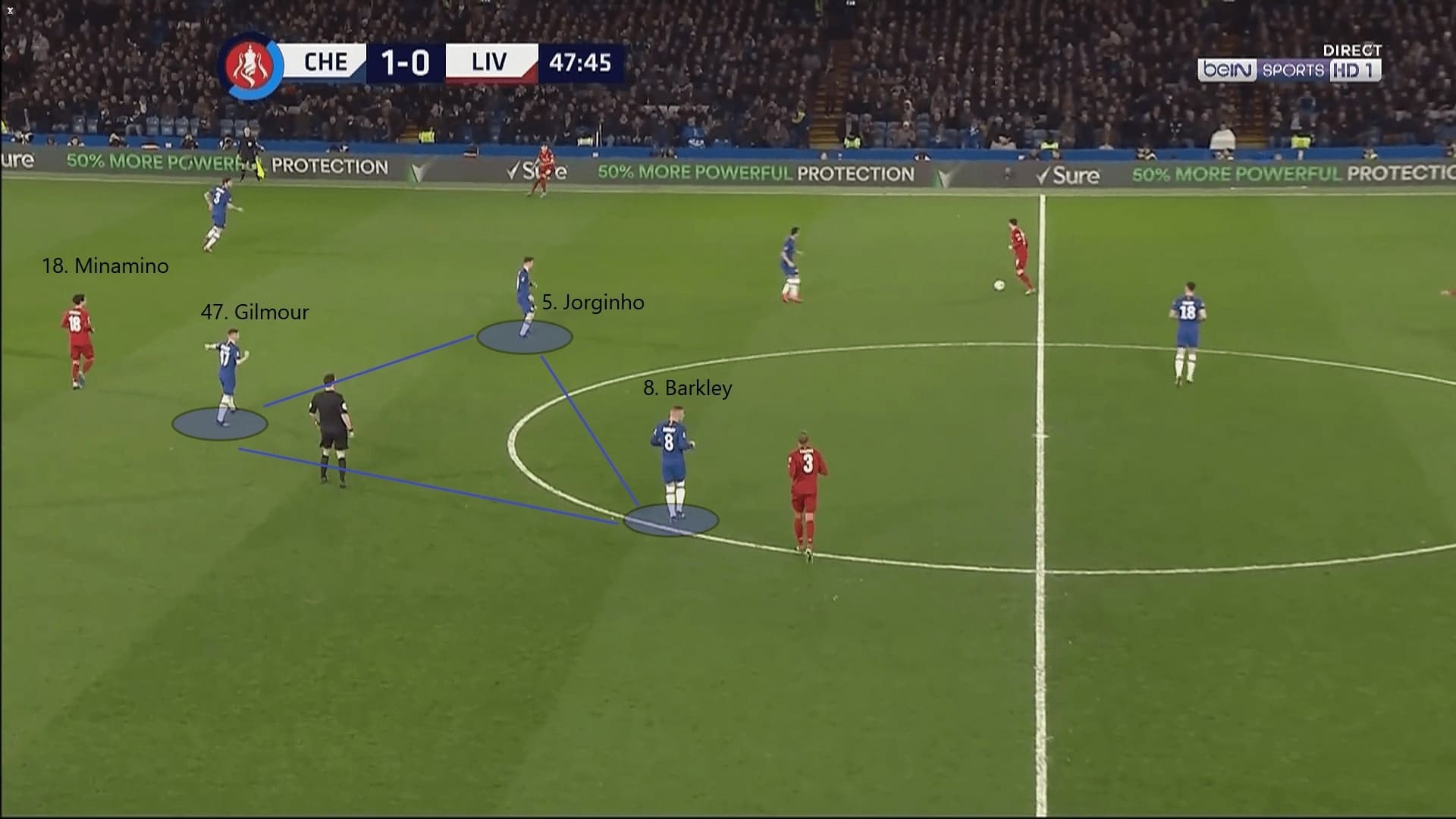
When Liverpool’s attack progressed, Gilmour helped his team to stop it. Since the Scottish midfielder was positioned at the centre initially, when Minamino cut inside he inevitably faced Gilmour, who was well-prepared to intercept the ball.
In this case, it showed the importance of Gilmour to defend zone 14. In the above image, if he moved laterally to cover Minamino, no spare midfielders could cover zone 14, and, those spaces were exploited by a Liverpool player and resulted in a shot.
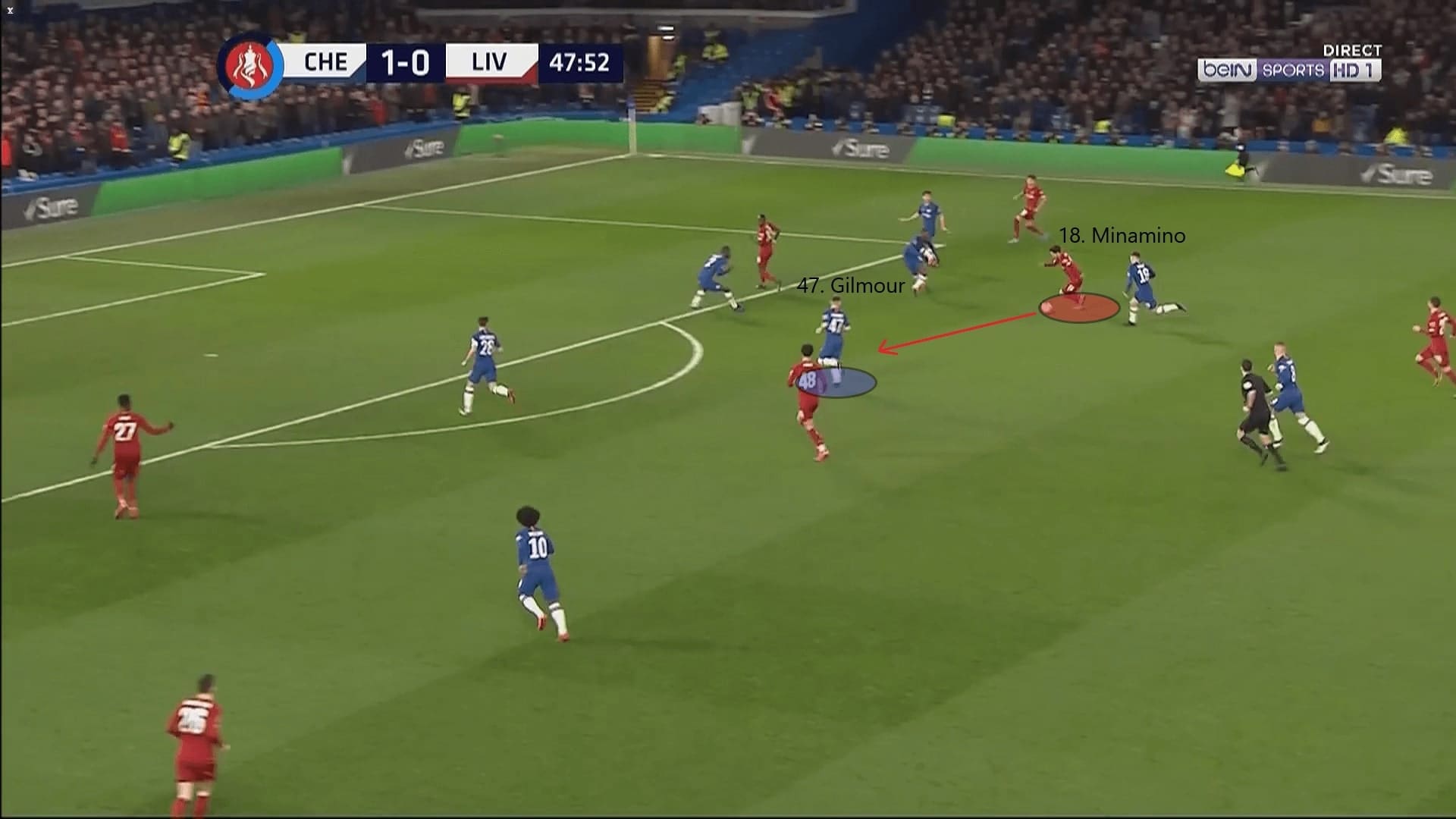
Below is another example to show the defensive awareness of Chelsea. When the Blues stepped out to press, the defenders were required to leave their position to engage the players around them. Such cases will generate gaps in the backline. As you can see, Alonso was unable to stop Minamino and Rüdiger had to approach the Japanese.
As a result, huge spaces appeared between Rüdiger and Azpilicueta. Fortunately, Chelsea had Gilmour to the rescue. Even though it was the last minute of the first-half stoppage time, he remained focused on Sadio Mané’s run. In this case, despite Mané being closer to the ball, Gilmour still managed to stick his foot out and get to the ball first.
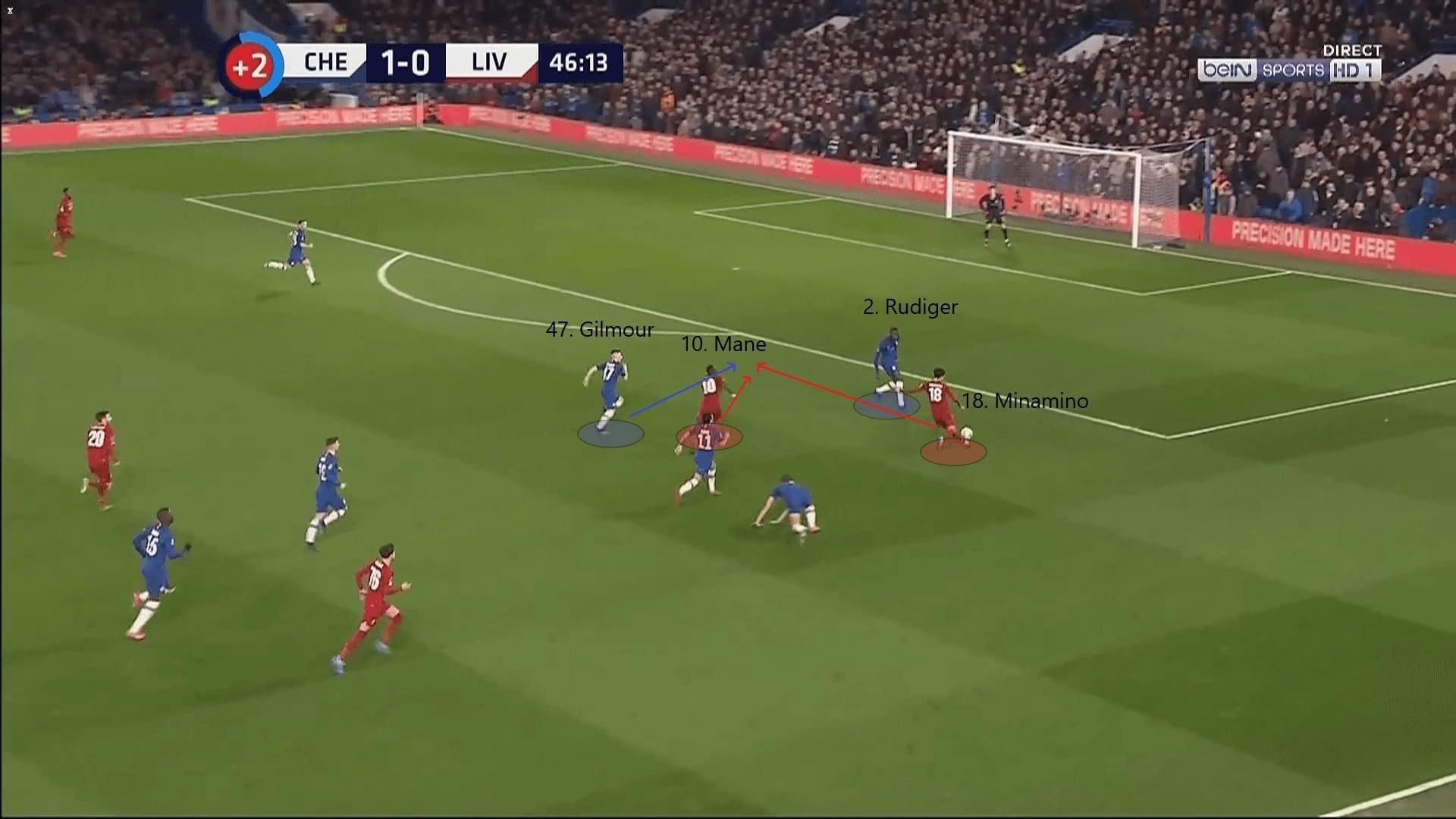
Gilmour averages 2.90 interceptions per 90 minutes and 8.04 recoveries. When he was defending, he showed his commitment. In this example, you can see Neco Williams tried to find Minamino. Gilmour also read the passing lane, and he just threw himself to intercept the pass. Although the pass from Williams was reaching Minamino, and Gilmour was far away from the Japanese, he still managed to win the ball back.
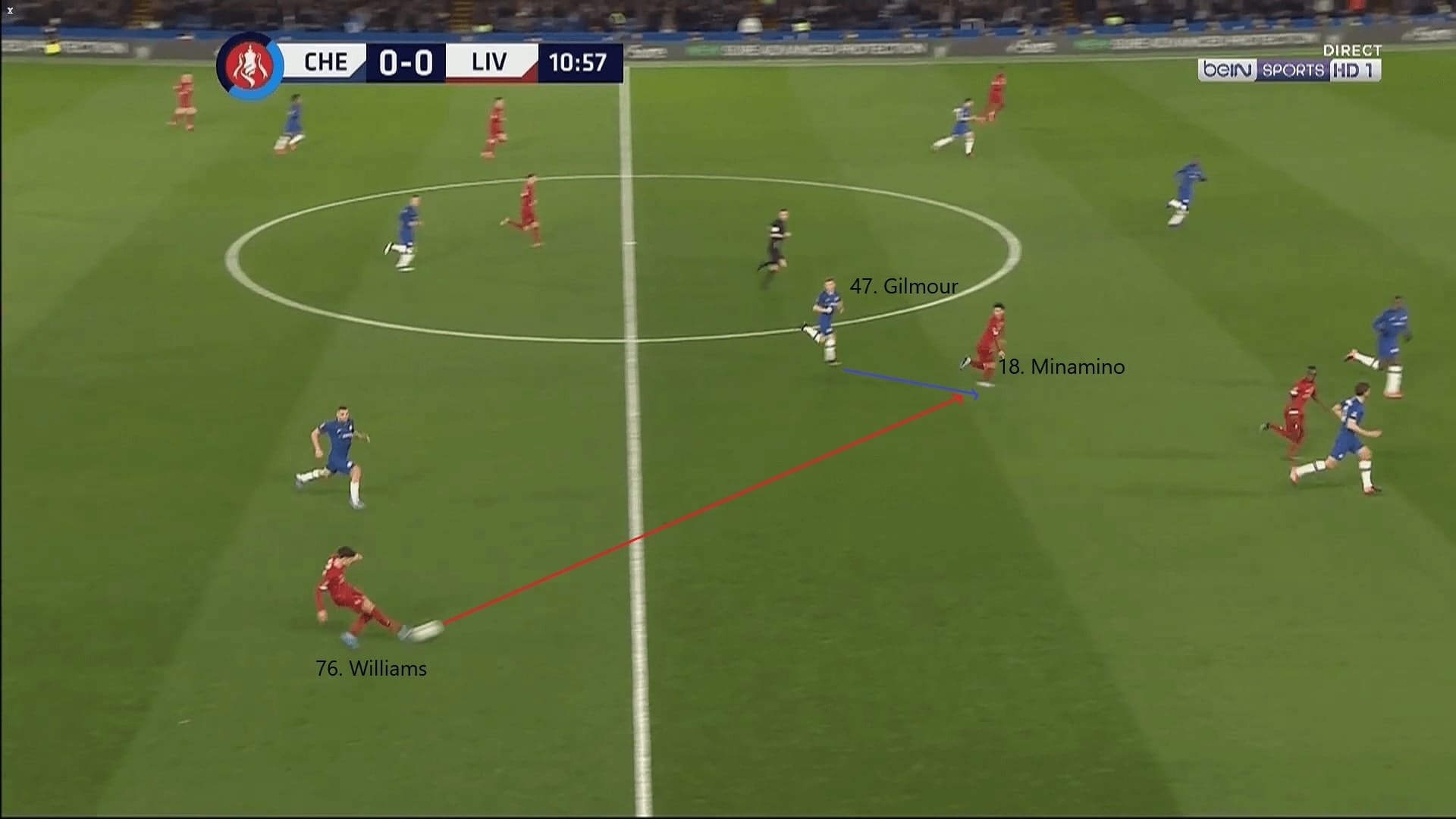
Conclusions
“Billy’s playing because he’s trained well all season.” – Lampard
Gilmour is a gem. Although he is an 18-year-old lad, he showed the maturity to play at a professional level. He has a good first touch and good positional awareness to play multiple roles in midfield. We think he is ready to warrant a place in the first team, and could win his first international cap soon.





Comments